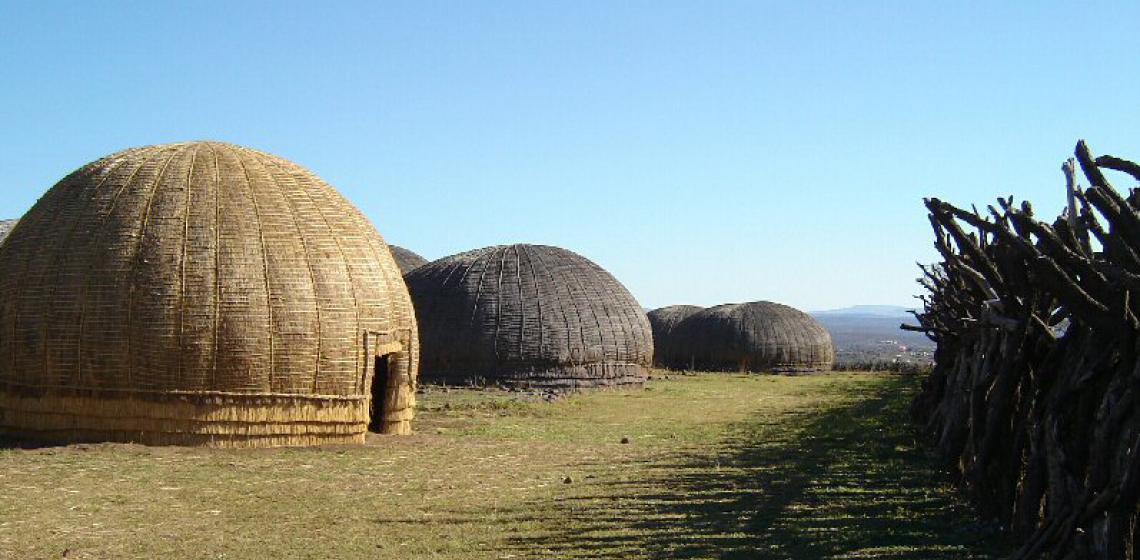
Experience the rich cultural heritage of the KwaZulu Natal region, from the earliest inhabitants to the present. Ondini, the Royal Residence of King Cetswhayo kaMpande served as the judicial and legislative capital of the Zulu Kingdom from 1873 to 1879.
It was burned to the ground by British forces after the battle of Ulundi on 4th of July 1879, the final battle of the Anglo-Zulu War...
The KwaZulu Cultural Museum is part of the Ondini Historical Complex which consists of:
I. The reconstructed Royal Residence of King Cetshwayo - Ondini
In 1980 an archaeological investigation of the site was initiated, aimed at trying to determine the former capital’s size and layout.
To date, only the Royal Enclosure (Isigodlo) of Ondini has been reconstructed. This has been undertaken largely on the basis of the archaeological evidence forthcoming from the excavations.
II. Site museum
A small site museum provides background to the pre-colonial history of the region.
It also feature a model explaining the layout of the royal residence and displays on the Anglo-Zulu War, King Cetshwayo, the Zulu Monarchy and the excavations at Ondini. It also exhibits items which belonged to King Cetshwayo i.e the silver mug and bible which he received from Queen Victoria, his shotgun and lion claw necklace)
III. The KwaZulu Cultural Museum
The KwaZulu Cultural Museum was opened in 1984. It houses one of the most representative collections of the rich cultural heritage of KwaZulu Natal, from the earliest inhabitants to the great Zulu Nation. It focuses on the Nguni speaking peoples of South-Eastern Africa.
The museum houses one of the most representative collections of Zulu material culture in the country, with a fabulous collection of Zulu beadwork.
One can also experience interactive displays, from touching tools dating back to the Stone Age, to smelling traditional medicine and playing musical instruments
